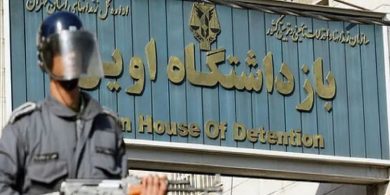For decades, Iranian women have endured systemic repression under a regime that not only denies them basic rights but also seeks to erase their presence from the public and political spheres. Yet, from beneath the layers of control and fear, they have built a powerful tradition of resistance. This resistance, once silenced or limited to private acts of defiance, has now evolved into a full-scale uprising—with women leading the charge for a freer, more equal Iran.
From the silent struggles of the post-revolutionary 1980s to the defiant chants of “Women, Life, Freedom” echoing in the streets today, the journey of Iranian women’s resistance is one of extraordinary courage, resilience, and transformation.
1. Post-Revolution Iran: From Rights to Repression
The 1979 Revolution’s Broken Promises
When the Islamic Republic was established in 1979, many Iranian women, who had participated in the revolution hoping for greater social justice, were shocked to find their rights swiftly rolled back. Under the new regime:
• Compulsory hijab laws were imposed, criminalizing uncovered hair.
• Gender segregation was introduced in schools, transportation, and public services.
• Women were banned from becoming judges and faced discrimination in divorce, inheritance, and custody laws.
• The age of marriage was lowered, and restrictions on polygamy and temporary marriage were removed.
This systemic shift reduced women to second-class citizens in their own country. Those who resisted faced arrest, beatings, and public shaming.
2. The Quiet Defiance of the 1980s and 1990s
Underground Feminism and Cultural Resistance
With the IRGC and Basij enforcing morality codes, the 1980s became a decade of fear and suppression. Yet, women continued to resist—often in subtle, quiet ways.
• Wearing colorful or loosely wrapped hijabs in defiance of the mandated black chador.
• Hosting private reading groups, discussing banned literature and feminist thought.
• Creating underground publications or writing between the lines of allowed media.
While mass protests were rare during this time, the underground intellectual movement planted the seeds for future organized resistance.
3. The Reform Era and Rising Voices (1997–2005)
Khatami’s Presidency: A Breath of Hope
The election of President Mohammad Khatami in 1997 brought cautious optimism. His platform of “dialogue of civilizations” and civil society emboldened many women to speak more openly about their rights.
• Newspapers and women’s magazines flourished.
• Female journalists, like Masih Alinejad, began writing critically about laws and governance.
• Women’s rights organizations were formed legally for the first time.
However, the IRGC and conservative judiciary quickly clamped down on reformist gains. Many journalists and activists were arrested, and media outlets were shut down. But the idea that change was possible had taken root.
4. The One Million Signatures Campaign (2006)
This landmark campaign marked a turning point in Iran’s feminist movement.
• Organized by young women activists, the goal was to gather one million signatures to demand reform of discriminatory laws.
• The campaign was grassroots, peaceful, and legal, yet participants were harassed, detained, and sentenced.
• It introduced a new generation of women leaders who combined online tools, community engagement, and legal knowledge to mobilize across the country.
Although the campaign was eventually suppressed, its legacy endures in Iran’s modern feminist resistance.
5. Digital Defiance: The 2010s and the Rise of Social Media Activism
My Stealthy Freedom and Online Movements
With the rise of platforms like Facebook, Twitter, and Instagram, Iranian women gained new ways to resist:
• Masih Alinejad’s “My Stealthy Freedom” invited women to post hijab-free photos online.
• Campaigns like “White Wednesdays” encouraged women to wear white scarves to protest compulsory hijab laws.
• Videos of police brutality and harassment by the morality police circulated widely, drawing global attention.
The IRGC responded with cyber units, arrests of Instagram influencers, and digital surveillance. But the more they cracked down, the more the world began to see what Iranian women faced daily.
6. Mahsa Amini and the Spark of a Nationwide Uprising (2022)
From One Death, a National Rebellion
The September 2022 death of Mahsa (Jina) Amini, a 22-year-old Kurdish woman arrested by the morality police for “improper hijab”, was the spark that ignited a historic uprising.
• Protests broke out in dozens of cities, led predominantly by young women and students.
• The chant “Women, Life, Freedom” became a national and global slogan.
• Women publicly removed their hijabs, cut their hair, and faced down riot police.
This uprising was different: it wasn’t just about the hijab—it was about dignity, bodily autonomy, and the demand to end the Islamic Republic’s rule.
7. The Role of the IRGC in Suppressing Women’s Resistance
State Violence and Fear Tactics
The IRGC plays a central role in silencing dissent:
• Snatching women off the streets, especially protest leaders.
• Using facial recognition to identify hijab protesters online.
• Torturing and extracting forced confessions from detained women.
• Targeting journalists, lawyers, and mothers who speak out.
Yet despite their brutality, the IRGC has failed to stop the momentum of women’s resistance. In fact, their violence has only amplified the movement.
8. Women in Prison: Courage Behind Bars
Many women have become symbols of resistance from within Iran’s notorious prisons.
• Narges Mohammadi, a human rights defender, has written essays from Evin Prison describing conditions and abuses.
• Sepideh Gholian, a journalist, was re-arrested for shouting anti-regime slogans outside the prison gate.
• Nasrin Sotoudeh, a lawyer, continues to speak out despite repeated arrests and long sentences.
These women show that even in the darkest cells, resistance lives on.
9. The Global Echo of Women’s Uprising
The uprising inspired solidarity protests across the world—from Paris and Berlin to Toronto and Los Angeles. Iranian women became:
• Symbols of feminist resistance across the Middle East.
• A catalyst for policy shifts, like calls to designate the IRGC as a terrorist organization.
• A focus of international human rights campaigns by Amnesty International, UN Women, and others.
10. From Protest to Policy: What Comes Next?
Iranian women’s resistance is no longer just about changing laws—it’s about changing the system. For real change to take place:
• The compulsory hijab law must be repealed.
• The IRGC’s power must be dismantled.
• Gender equality must be enshrined in a future democratic constitution.
• Transitional justice must address decades of violence against women.
This isn’t just a women’s issue—it’s a national demand for freedom.
Conclusion: The Silence Is Over
What began as whispered defiance in living rooms has become an undeniable roar in the streets. Iranian women have transformed from the silenced to the leaders of one of the most significant resistance movements in the modern Middle East.
Their uprising is not over—and neither is the world’s responsibility to stand with them. The path to a free Iran is being carved by women who have refused to bow. And when that freedom comes, it will carry the voices of generations who turned silence into revolution.
Join Our Newsletter!
Stay informed with the latest updates, news, and ways to take action in the fight for justice and global security. Sign up now to get updates delivered straight to your inbox!





